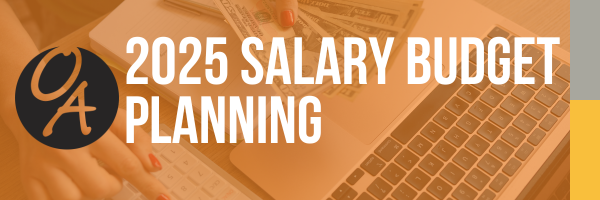
In the latest release of the National Compensation Forecast by the Economic Research Institute [ERI], a comprehensive analysis of compensation trends reveals notable insights into salary movements and projections for the upcoming year. This report, based on data from ERI's Salary Assessor and Salary Increase Survey & Forecast, highlights the dynamics of the labor market and provides guidance on expected pay increases.
Overview of Compensation Growth
The second quarter of 2024 witnessed a slight increase in compensation growth, with a rate of 0.84%, compared to April's growth of 0.79%. However, this rate is below the growth rates of 1.09% in January and 0.94% in October of the previous year. Despite the marginal increase in July, the annual compensation growth rate has decreased to 3.65%, down from the previous quarter's rate of 4.1%. This decline is attributed to the 2023 Q2 growth rate of 1.17% no longer influencing the average.
Labor Market Dynamics
The labor market has tightened considerably since the last quarter. The current job opening rate stands at 4.8%, aligning with the 10-year average. This is a significant decrease from the peak rate of 7.3% in March 2022. The hires rate remains steady at 3.6%, resulting in a gap of 1.2% between open jobs and hires. Although this gap has narrowed from its highest point of 2.9% in March 2022, it still exceeds the 15-year average gap of 0.37%. This persistent gap indicates that organizations are still struggling to fill positions, potentially leading to upward pressure on compensation rates.
Quit Rates and Unemployment
The employee quit rate has decreased to 2.2%, down from the peak of 2.9% in April 2022, but slightly higher than last quarter. This rate is just below the 10-year average of 2.25%. Additionally, the unemployment rate has risen to 4%, up from 3.5% in July 2022, yet it is still considered within the range of full employment. The prime-age employment-to-population ratio [EPOP] remains at 80.8%, slightly higher than the pre-pandemic rate of 80.5%, but below the all-time high of 81.9% in April 2000.
Economic Indicators
Several economic indicators suggest a mixed picture of the economy's health. The inflation rate stands at 3.3%, a significant reduction from the high of 9.1% in June 2022. The Federal Reserve Bank of Atlanta projects a Q2 GDP growth rate of 3%, up from 1.3% in Q1 2024, but lower than the Q4 2023 rate of 3.4%. Real hourly wages have seen a slight increase of 0.8% over the past year, despite a recent monthly decline of 0.5%.
Compensation Growth Projections
Despite the overall slowing of compensation growth, rates remain higher than historical averages. The gap between hires and open jobs, coupled with fewer employees quitting, suggests continued upward pressure on compensation. However, the narrowing of this gap may signal a cooling period for salary increases. ERI anticipates that compensation growth will remain above average through 2024, but the rate of growth is expected to decelerate.
We have deep experience with base compensation benchmarking, incentive program development, and total rewards. Check out our updates on workforce strategy and compensation or contact us for other helpful resources.

